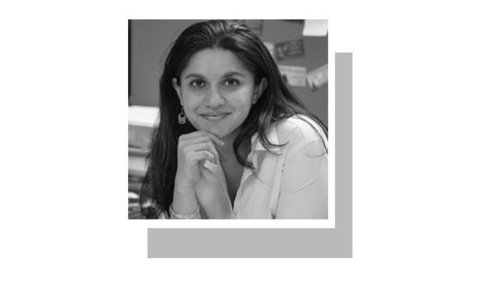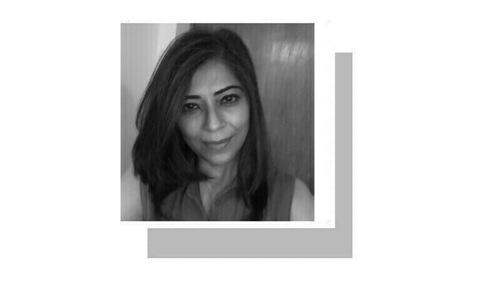 KARACHI, June 4: India’s transition from a highly centralized, planned economy fuelled by the ideals of Nehruvian socialism to becoming a poster child for free market capitalism has made it into one of the fastest growing economies of the world. But though this breakneck growth has resulted in gleaming new structures and IT hubs, in the shadows lurk millions of poor Indians who are fighting for their economic survival.
KARACHI, June 4: India’s transition from a highly centralized, planned economy fuelled by the ideals of Nehruvian socialism to becoming a poster child for free market capitalism has made it into one of the fastest growing economies of the world. But though this breakneck growth has resulted in gleaming new structures and IT hubs, in the shadows lurk millions of poor Indians who are fighting for their economic survival.
It is this contrast that Urban Changes, a photographic exhibition that opened at the Goethe-Institut here on Wednesday, so beautifully explores. The exhibition is a result of a workshop conducted by Berlin-based photographer Andrea Kuenzig in which South Asian photographers participated. Sohail Abdullah, a Karachi-based lensman who was one of the participants, was present at the inauguration and delivered a small talk about the project.
Bangalorean photographer Mahesh Shantaram’s work explores life in his neighbourhood, which seems to be one of the city’s new middle class residential areas. With a diploma in photography from Paris, the lensman captures typical moments in atypical fashion, as men and women, boys and girls head to work/school, while people relax on their terraces and couples share quiet moments on apartment rooftops.
One of the most outstanding shots from this collection is the one of an aircraft gently ploughing its way into the clouds above a suburban building in this South Indian city that has become known as an industrial and technological hub.
British photographer Clare Arni, also based in Bangalore, captures a slice of life from India’s economic powerhouse of Mumbai in her series called ‘Cityspace,’ subtitled ‘Neighbour, 2007.’ Her work includes shots of fisherman and modest little boats anchored near a small group of rocks littered with an innumerable amount of rubbish.
But Arni’s piece de resistance is a marvellous shot of a Mumbai quay, which perfectly captures the dynamic flavour of the Indian metropolis. Women in brilliant, brightly coloured saris stand side by side with men in loose shirts, as a Muslim-looking bearded gentleman – complete with a webbed prayer cap – looks on, while the ubiquitous black and yellow Indian taxis and boats can be seen in the background. Her collection also includes great shots of dyers in Bangalore.
Sohail Abdullah, who graduated from the Indus Valley School of Art and Architecture in 2006 with a qualification in fine arts, has taken photographs of Mumbai’s ‘wallscapes.’ Some of the shots were taken along a wall on P. DeMello Road, others in Bandra while some photographs were taken at a textile mill in Colaba.
Abdullah’s shots have an abstract, painting-like quality and perhaps the most interesting is the one which has a painted image of boxing great Mohammad Ali, while another shot makes brilliant use of shadows.
Bangalore-based doctor-turned-photographer Vivek M’s black and white photography showcases stark urban wastelands. Whereas the others have focused on the colours that abound, M throws a light on the dark side of ‘Shining India.’ He has chosen scavengers who live on garbage dumps as his subjects, and according to him, many of these scavengers are landless peasants and labourers driven away from their ancestral homes by builders. Thus they scavenge the garbage dumps for survival.
Female workers show soiled hands and acid-stained feet, while the smoke is seen rising from still burning heaps of garbage as the women rummage to find something of value. These are the people the Indian economic miracle left behind.
Sri Lankan photographer Alefiya Akbarali’s work is a riot of colours. She has chosen the ghats and the dhobis, or washermen who inhabit them, as her subjects. She has trained her camera on Mumbai’s Saat Rasta ghat near the Mahalaxshmi Station. One of the shots shows a makeshift shrine where pictures of Hindu deities are reverentially placed, while her most spectacular effort is a night shot where the impressive Mumbai high-rise apartments are seen dwarfing the humble ghat.
A slideshow of the photographers whose work could not be displayed was also shown at the launch.
Urban Changes will run up till June 18.—QAM














































Dear visitor, the comments section is undergoing an overhaul and will return soon.